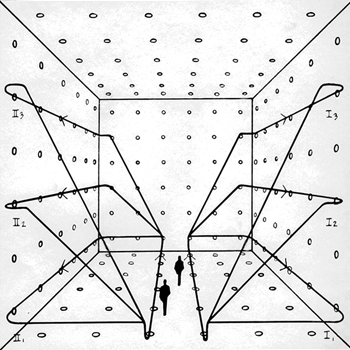This is homogeneous so we only need the complementary solution.
The most common approach which is to go straight to the "characteristic equation", which here is:
#lambda^2 + 4 lambda + 5 = 0#
And which has complex roots:
#lambda_(1,2) = (-4 pm sqrt ( 4^2 - 4(5) ))/(2) = - 2 pm i#
The solution to this equation is therefore:
#y = A e^((-2 + i )x) + B e^((-2 - i )x)#
# = e^(-2x) (A e^( i x) + B e^( - i) x)#
Using Euler's Formula, #e^(i theta) = cos theta + i sin theta#, we can expand this to:
# = e^(-2x) (A (cos x + i sin x) + B (cos x - i sin x ))#
# = e^(-2x) ( (A+B) cos x + i (A-B) sin x)#
And then simplify with new integration constants:
# = e^(-2x) ( C cos x + D sin x)#
We can now apply the IV's:
#y(0) = 2 implies 2 = (1) ( C + D (0)) implies C = 2#
We then have:
#y = e^(-2x) ( 2 cos x + D sin x)#
So by the product rule:
#y' = -2e^(-2x) ( 2 cos x + D sin x) + e^(-2x) ( - 2 sin x + D cos x)#
#= e^(-2x)( ( -4 + D)cos x - (2D + 2) sin x) #
Applying the other IV:
#y'(0) = -7 implies -7 = (1)((-4+D) - (2D+2)(0) )#
# implies D = -3#
#implies y = e^(-2x) ( 2 cos x - 3 sin x)#

